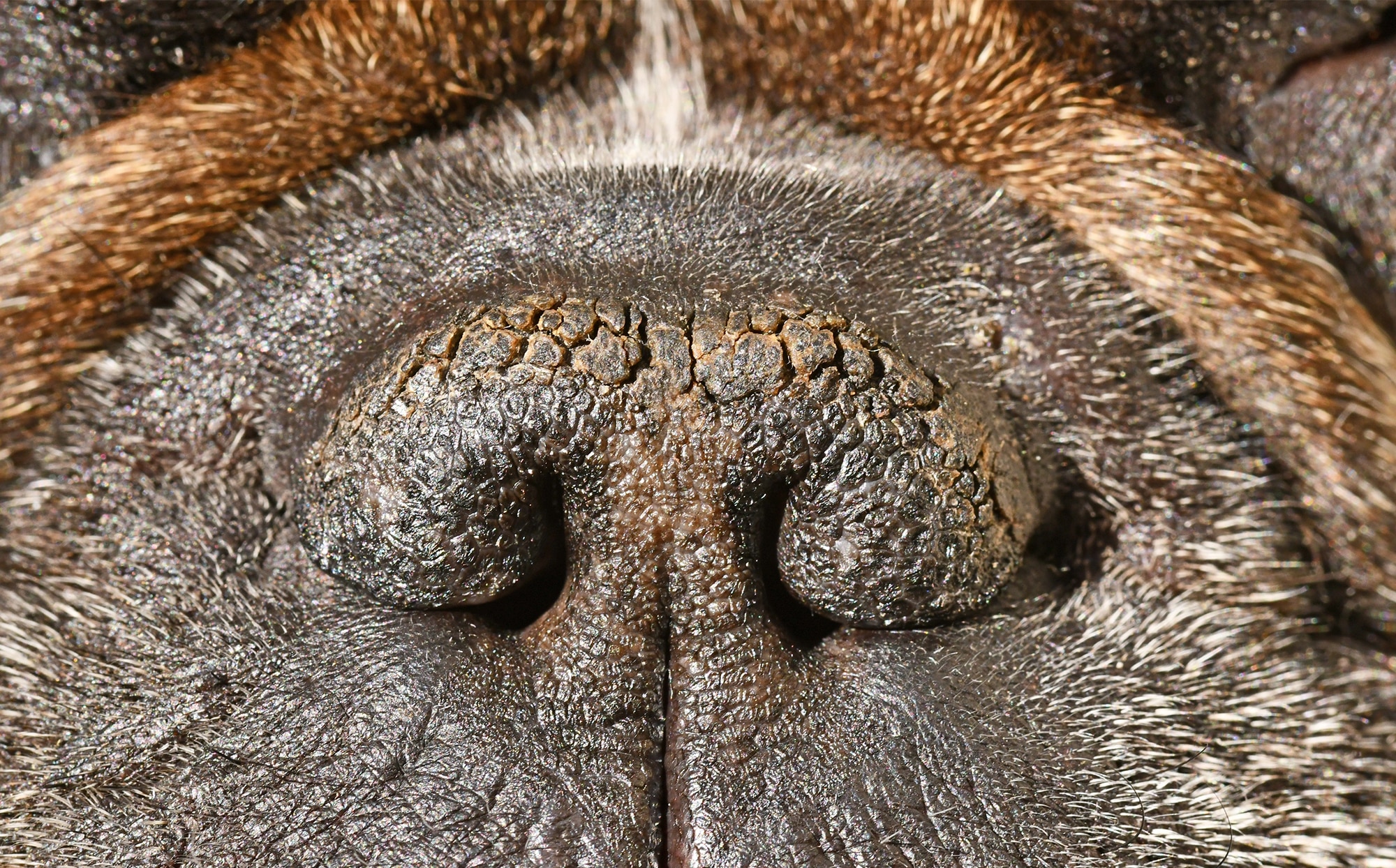There is an old wives’ tale that says, “A healthy dog should have a cold, wet nose.” While a dog with a cold, wet nose can be healthy, their nose does not need to be wet or cold to be healthy. The time to be concerned is when a dog’s nose – or paws – become so dried out that they begin to crack.
This blog examines reasons why a dog’s nose may be wet or dry, along with tips on how to prevent a dog from developing an overly dry, cracked nose. It’s important to keep tabs on your pet’s condition so you can catch issues before they cause pain for your pet.
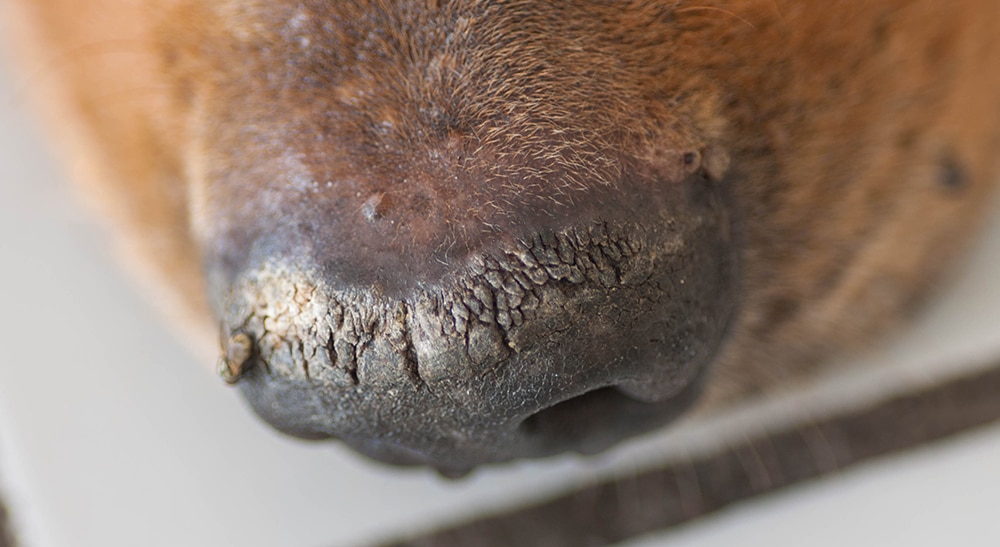
Why Do Dogs Have Wet Noses?
As weird as it sounds, dogs’ noses help regulate their temperature. Dogs do not sweat like humans do – they sweat through their nose and paws.
The mucus on a dog’s nose also helps them retain smells. It is normal for a dog to lick its nose frequently to clear it of old scents and prepare to verify new scents.
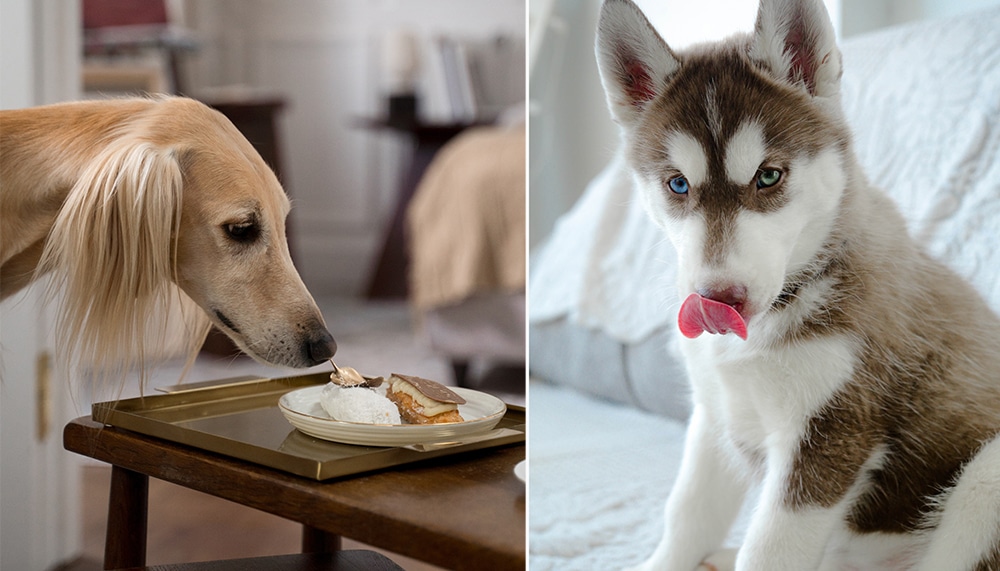
Why is My Dog’s Nose Dry?
Luckily, a dry dog nose is not always a concern. Below are some common reasons why a dry nose may occur. Understanding the cause will help you determine whether care or treatment is necessary for your pet.
After Sleeping
If you notice that your dog’s nose is dry in the morning or shortly after a nap, there is likely no problem. Dogs frequently lick their noses throughout the day to keep them wet, so it stands to reason that they would be dried out after sleeping.
Your pet is still producing mucus while it sleeps, though they are generally not licking themselves and spreading moisture across every part of the nose. Most often dog noses return to normal moisture levels within ten minutes of being awake.
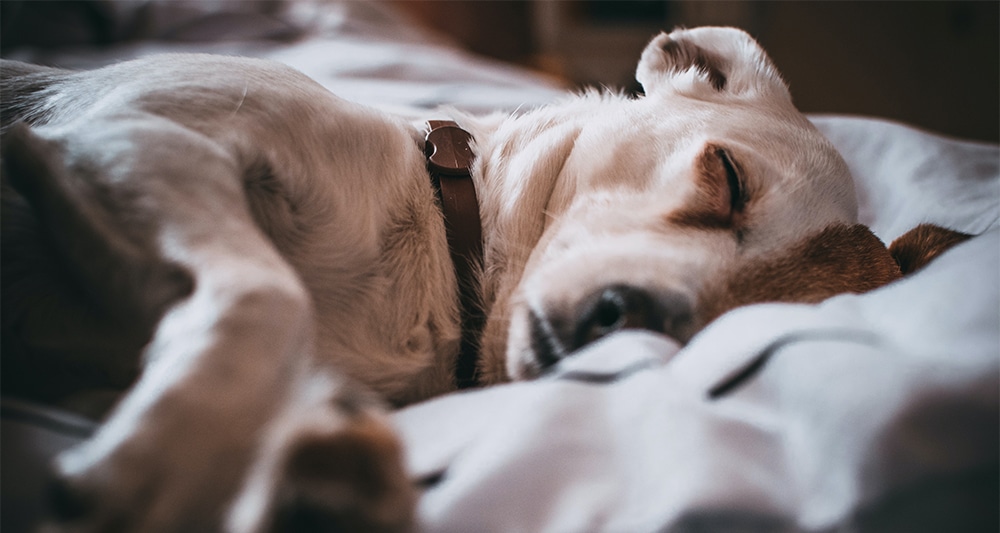
Dehydration
Just like humans, it is common for dogs to get slightly dehydrated after physical exercise or rough play. Be sure to supply your dog with plenty of fresh water after exercise or play time and you should see an improvement in their mood and nose moisture.
Age
The younger the dog, the more mucus it will produce. As your dog ages, it produces less mucus, therefore causing a drier nose. It is not uncommon for senior dogs to get dry, cracked noses.
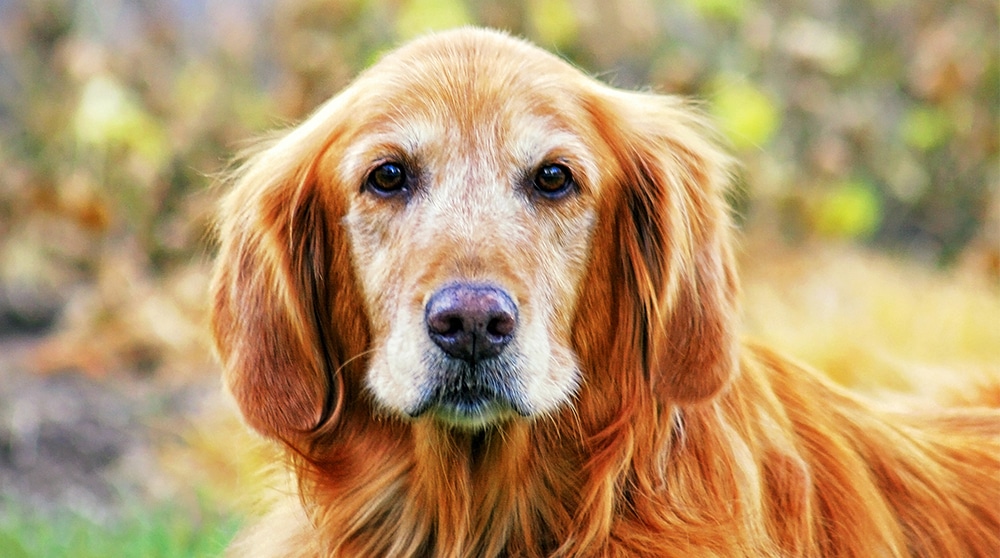
Changes in Weather
In summer, a dog’s body heat may escalate to the point of drying out their nose. To help combat them from overheating, ensure your pet has access to shade and is sheltered from direct sunlight during the day.
Winter months bring low humidity, and dogs are likely to warm themselves by a heater or other heat source, causing noses to become more dry. For this reason, many dog owners utilize humidifiers indoors to help replenish moisture in the air.
“Winter nose” and “snow nose” is when a dog’s nose changes color in winter months – typically lightening in color from a dark color to a light brown or pink. This condition is generally purely cosmetic and not a cause for concern.
Paws are especially sensitive to weather changes. They can be burned by hot pavement in the summer and easily get scraped up by ice and snow in the winter. Keep in mind, if pavement is too hot for you to walk on barefoot, it is also too hot for your dog.
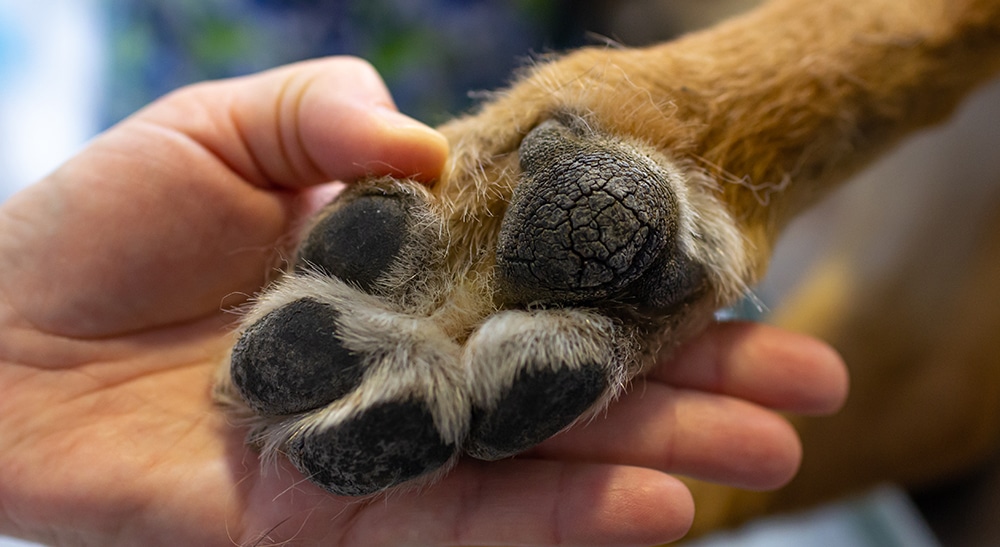
Breed of Dog
A dog’s breed has a huge impact on the health of their nose. Brachycephalic dogs like Bulldogs and Shih Tzus have a hard time licking their nose because of the structure of their anatomy. It is not uncommon for these breeds to get noses that crack. Applying a pet safe nose balm multiple times a day is best for these types of breeds.
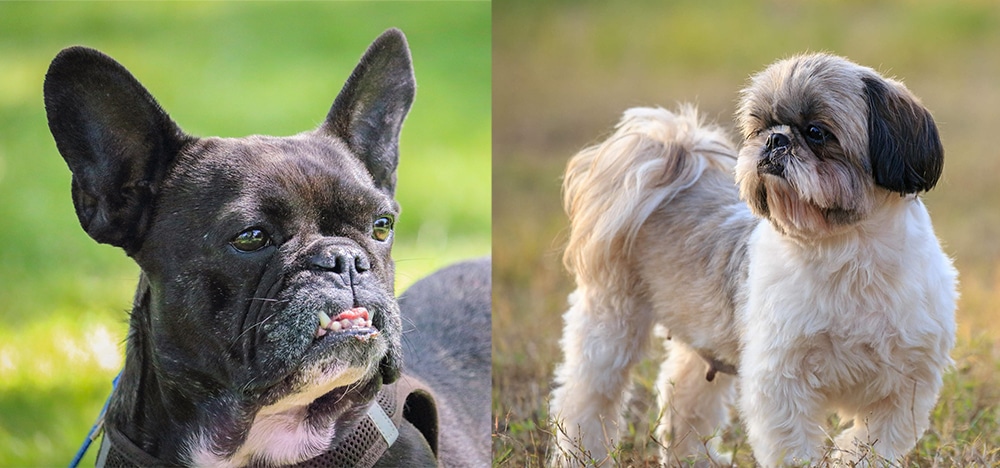
Sunburn
Sunburns aren’t fun for anyone, and dogs can burn just as easily as we can. You should be especially cautious if your pet has a pink- or liver-colored nose, as these burn much faster and easier than dogs with darker noses.
There are a number of products available to keep the sun off your dog’s nose. Doggy sun sticks can be applied to your dog’s nose, ears, muzzle and other areas that have pink skin. Burns can be soothed and treated topically with aloe vera, witch hazel or coconut oil.
As mentioned earlier, it’s also a good practice to ensure your pet has access to shade and isn’t left in harsh, direct sunlight for extended periods of time.
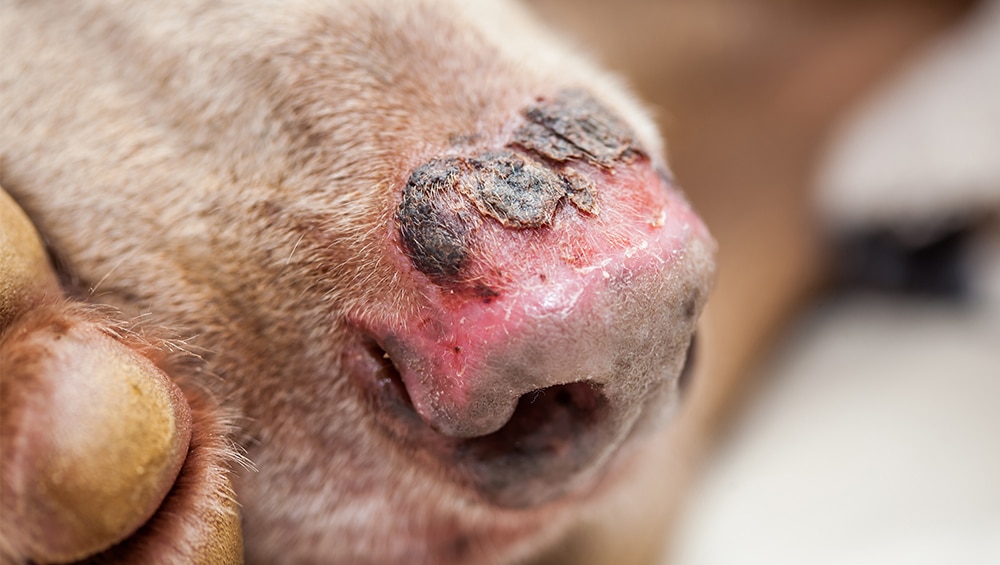
Allergies
Allergies are both difficult to diagnose and treat. If there is suspicion of allergies, there will typically be other issues on your pet’s body. Work directly with your vet to help find the best treatment options for your pet.
If the symptoms continue and are severe, you may need to seek the advice of a board-certified veterinary dermatologist in your area.

Autoimmune Diseases
There are several autoimmune diseases that can affect the nose, with Lupus and Pemphigus being the most common. In these cases, a dog’s nose surface may change and develop dryness, cracking and bleeding. Other possible symptoms of an autoimmune disease include lesions covering the entire body or around the muzzle and even a completely smooth nose.
A veterinarian would be necessary to diagnose these diseases and recommend treatment options. Typically, immunosuppressive drugs are needed to help treat autoimmune diseases.
Canine Distemper
Distemper, caused by the canine distemper virus, is a viral, highly contagious disease that affects multiple organs and can be fatal in dogs and other animals. Take note if your pet develops thick, yellow discharge from their eyes and nose. Other signs include fever, coughing, vomiting, lack of appetite, diarrhea and other unpleasant symptoms.
Luckily this disease is preventable with regular vaccines. Unfortunately, it is also incurable once a pet has the disease. Treatments for canine distemper aim to reduce the intensity of an animal’s symptoms but are not effective at eliminating the disease.

Fever
A fever often signals a viral, bacterial or fungal infection is present in your dog. Signs may include red eyes, lethargy, warm ears and nose, shivering, lack of appetite, coughing or vomiting. If you suspect your dog has a fever, take their temperature using an ear or rectal thermometer.
Never let your dog’s temperature exceed 103 degrees Fahrenheit. Take your dog to the vet as soon as possible to ensure your pet’s fever doesn’t worsen.
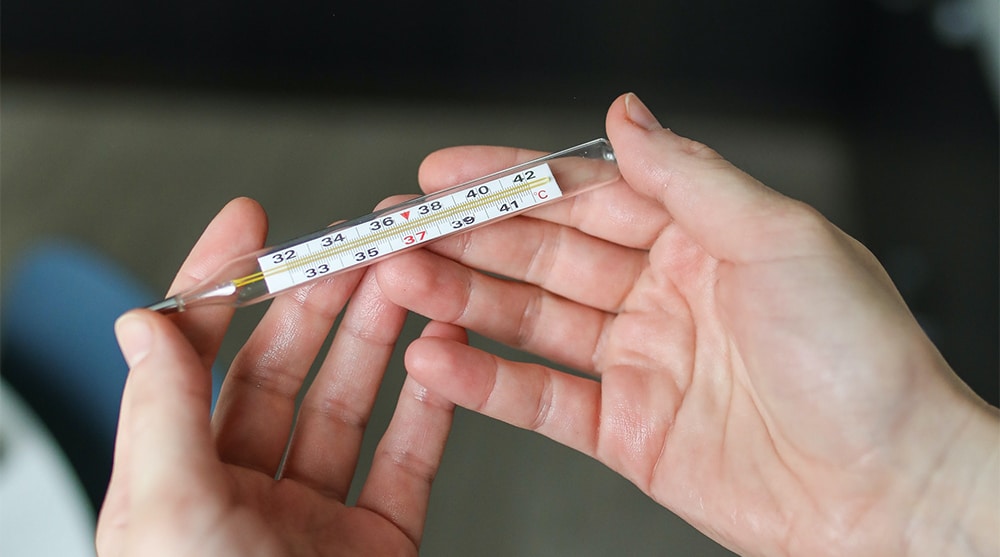
Hyperkeratosis
Dogs with hyperkeratosis have a thick outer layer of skin caused by an excess of keratin production. This condition can result from calluses, eczema, genetic disorders, inflammation and other causes. It especially affects the paw and nose, causing the skin to harden and crack. A dog’s hair can also become brittle and break or change pigmentation.
Severe Dehydration
Dehydration is detrimental to a dog’s health. Signs of severe dehydration consist of lethargy, excessive panting, vomiting and lack of skin elasticity.
Offer your pet water but ensure they don’t drink too quickly. Drinking too much too fast could cause them to vomit more. Once your pet has had a chance to drink some water, transport them to the vet as soon as possible.

Hyperthyroidism in Dogs
A dry nose is one of the common symptoms of hypothyroidism. Other signs may include hair loss, weight gain and lethargy. If you suspect your pet may be suffering from this, contact your veterinarian. Thyroid medications are available to treat this common condition.
Prevention and Treatment for Dry or Cracked Dog Noses
Many people forget that dogs have sensitive skin just like humans do. When our hands get dry or cracked, we tend to the affected areas with lotion. What are you adding to your pet’s routine to ensure they don’t dry out?
The easiest way to prevent your pet from getting a dry or cracked nose is by being proactive. If your pet is older or you know it is an “at risk” dog, applying a nose balm daily is the best thing you can do. A great option for nose balms is Snout Soother.

If your pet has a dry nose, you can use an over-the-counter product to keep it moisturized. Applying a warm, moist towel may help. Other home remedies include coconut oil, petroleum jelly, shea butter and olive oil. Be cautious not to use any products with Zinc or titanium oxide, as they can be toxic for dogs. Do not use Vaseline either, as it can also be toxic and cause diarrhea and an upset stomach.
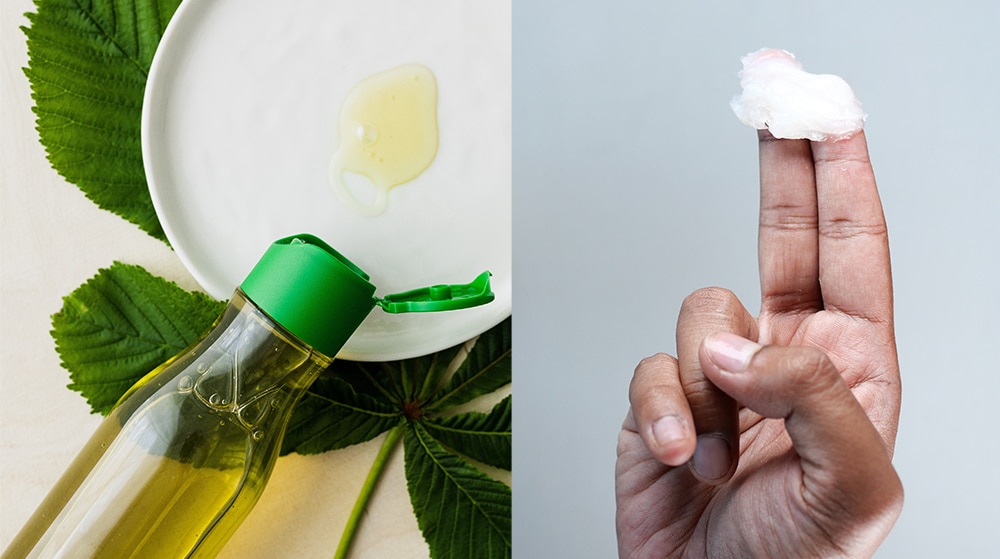
Keep your pet hydrated by always making sure they have access to cool, clean water. If your pet is kenneled while you are gone, consider attaching a no-drip water bottle to the outside of your dog’s kennel to ensure they have access to water throughout the day.
Seek Advice from a Professional
If your dog is experiencing more than just a dry nose and displays other concerning symptoms, seek the advice of your local veterinarian or veterinary dermatologist for guidance.
Your local pet groomer should also be able to help guide you with suggestions of products that are safe to use at home to moisten your dog’s nose, and pet safe balms and ointments can be found at your local pet grooming salon or pet store.


